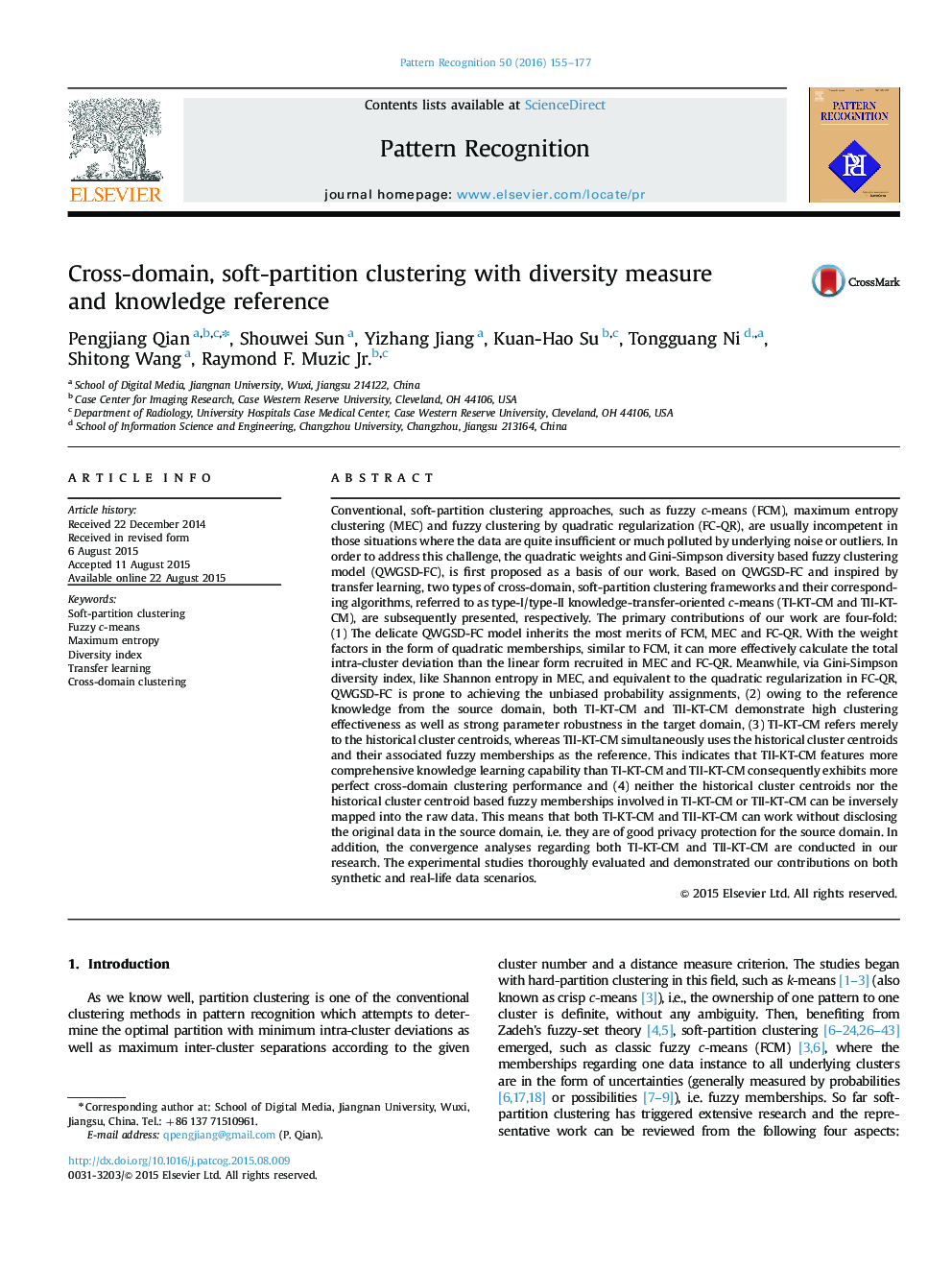| کد مقاله | کد نشریه | سال انتشار | مقاله انگلیسی | نسخه تمام متن |
|---|---|---|---|---|
| 6940077 | 869737 | 2016 | 23 صفحه PDF | دانلود رایگان |
عنوان انگلیسی مقاله ISI
Cross-domain, soft-partition clustering with diversity measure and knowledge reference
ترجمه فارسی عنوان
خوشه بندی پارتیشن های نرم افزاری با دامنه تنوع و مرجع دانش
دانلود مقاله + سفارش ترجمه
دانلود مقاله ISI انگلیسی
رایگان برای ایرانیان
کلمات کلیدی
موضوعات مرتبط
مهندسی و علوم پایه
مهندسی کامپیوتر
چشم انداز کامپیوتر و تشخیص الگو
چکیده انگلیسی
Conventional, soft-partition clustering approaches, such as fuzzy c-means (FCM), maximum entropy clustering (MEC) and fuzzy clustering by quadratic regularization (FC-QR), are usually incompetent in those situations where the data are quite insufficient or much polluted by underlying noise or outliers. In order to address this challenge, the quadratic weights and Gini-Simpson diversity based fuzzy clustering model (QWGSD-FC), is first proposed as a basis of our work. Based on QWGSD-FC and inspired by transfer learning, two types of cross-domain, soft-partition clustering frameworks and their corresponding algorithms, referred to as type-I/type-II knowledge-transfer-oriented c-means (TI-KT-CM and TII-KT-CM), are subsequently presented, respectively. The primary contributions of our work are four-fold: (1) The delicate QWGSD-FC model inherits the most merits of FCM, MEC and FC-QR. With the weight factors in the form of quadratic memberships, similar to FCM, it can more effectively calculate the total intra-cluster deviation than the linear form recruited in MEC and FC-QR. Meanwhile, via Gini-Simpson diversity index, like Shannon entropy in MEC, and equivalent to the quadratic regularization in FC-QR, QWGSD-FC is prone to achieving the unbiased probability assignments, (2) owing to the reference knowledge from the source domain, both TI-KT-CM and TII-KT-CM demonstrate high clustering effectiveness as well as strong parameter robustness in the target domain, (3) TI-KT-CM refers merely to the historical cluster centroids, whereas TII-KT-CM simultaneously uses the historical cluster centroids and their associated fuzzy memberships as the reference. This indicates that TII-KT-CM features more comprehensive knowledge learning capability than TI-KT-CM and TII-KT-CM consequently exhibits more perfect cross-domain clustering performance and (4) neither the historical cluster centroids nor the historical cluster centroid based fuzzy memberships involved in TI-KT-CM or TII-KT-CM can be inversely mapped into the raw data. This means that both TI-KT-CM and TII-KT-CM can work without disclosing the original data in the source domain, i.e. they are of good privacy protection for the source domain. In addition, the convergence analyses regarding both TI-KT-CM and TII-KT-CM are conducted in our research. The experimental studies thoroughly evaluated and demonstrated our contributions on both synthetic and real-life data scenarios.
ناشر
Database: Elsevier - ScienceDirect (ساینس دایرکت)
Journal: Pattern Recognition - Volume 50, February 2016, Pages 155-177
Journal: Pattern Recognition - Volume 50, February 2016, Pages 155-177
نویسندگان
Pengjiang Qian, Shouwei Sun, Yizhang Jiang, Kuan-Hao Su, Tongguang Ni, Shitong Wang, Raymond F. Jr.,
